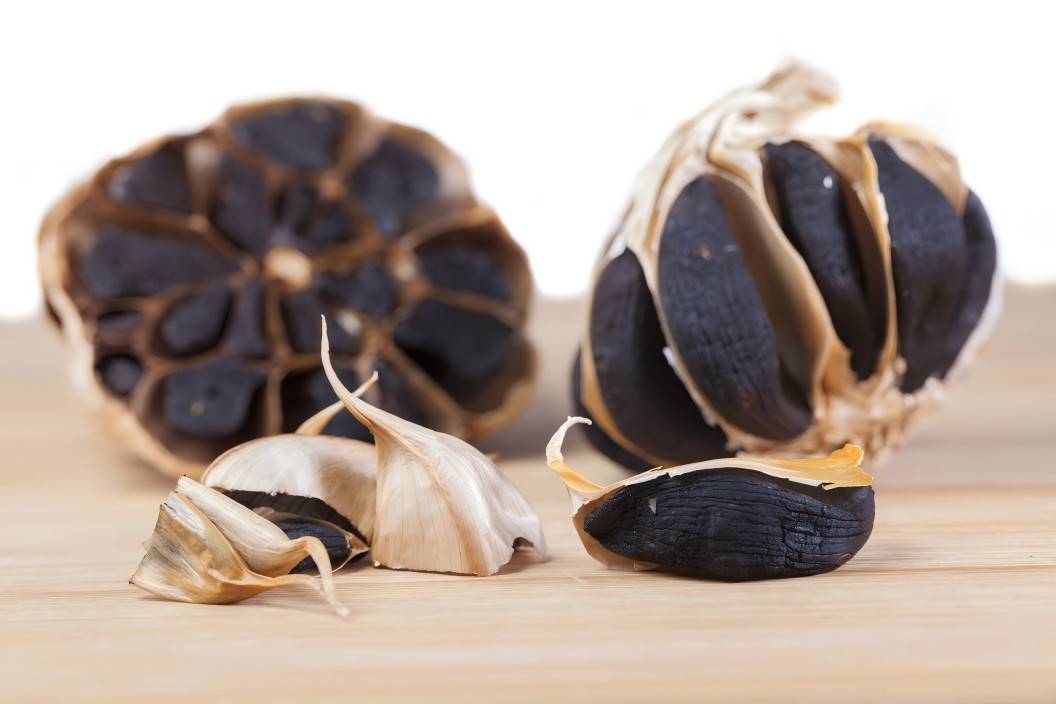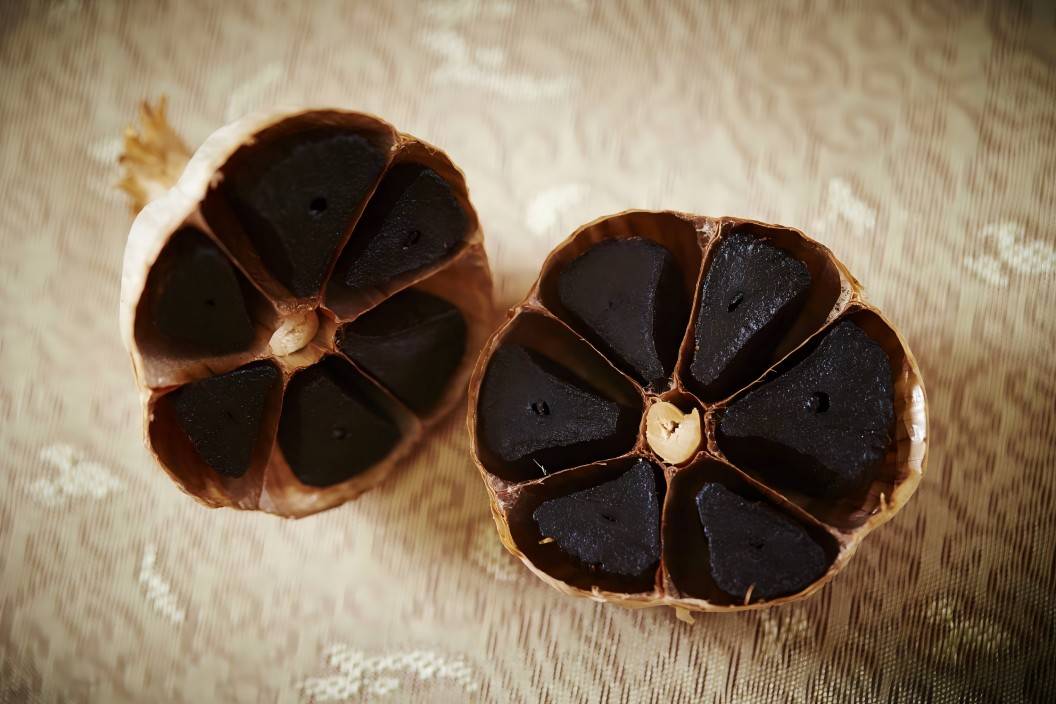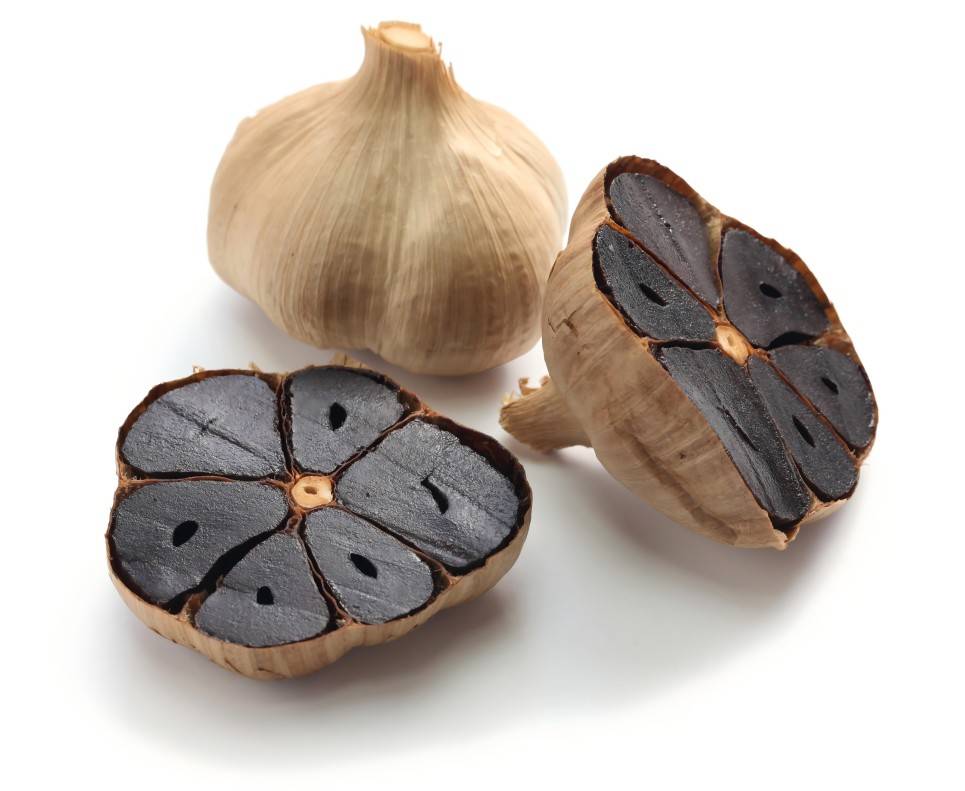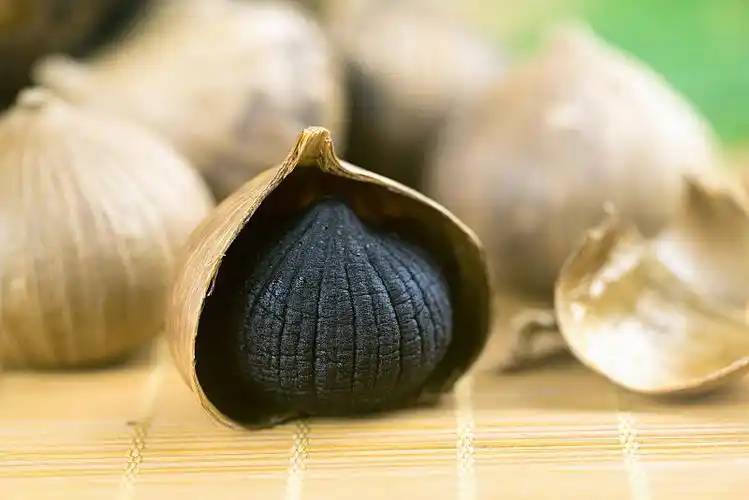What Are the Extraction Methods of Black Garlic Extract Powder?
Garlic is warm in nature and pungent in taste. It is the underground bulb of the lily family, Allium spp., and originated in Central Asia and the Mediterranean region. It is currently used as a condiment in people's daily diet. The Compendium of Materia Medica mentions that garlic can promote the smooth flow of the five internal organs, keep the channels throughout the body unobstructed, dispel cold and dampness, expel evil, disperse swelling and abscesses, and digest accumulated meat and food. Black garlic is a deep-processed food made from garlic. It is made by treating garlic at a temperature of 60–90 °C and a humidity of 70%–90% to cause browning[1].
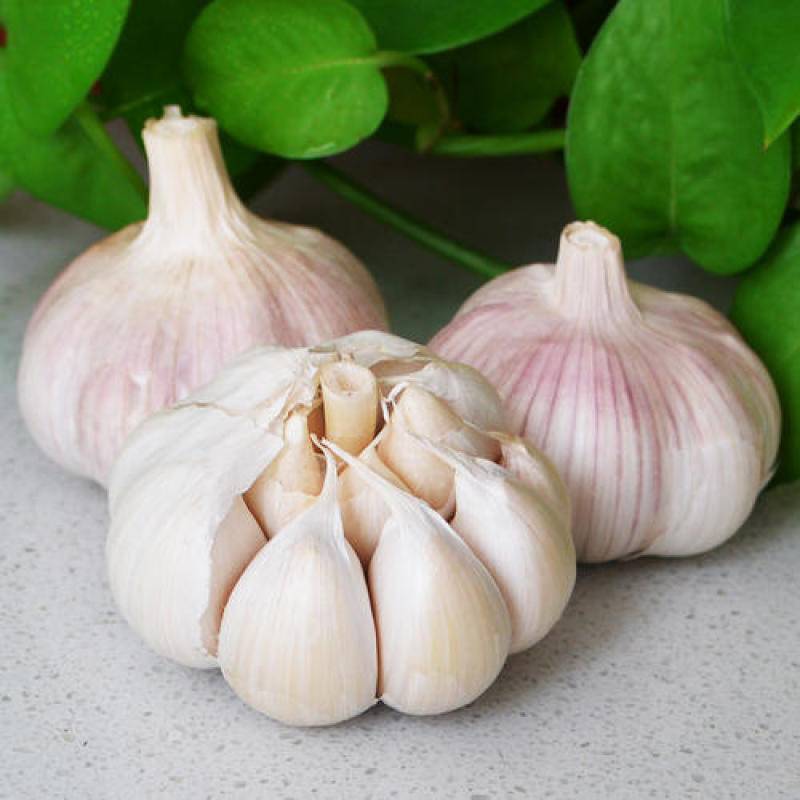
Fermented black garlic retains the original garlic flavor, with the pungent taste removed. Black garlic is sweet and sour, soft and chewy, and loved by most consumers. Black garlic has enhanced antioxidant properties, strengthens the immune system, prevents high blood pressure and cardiovascular disease, and has a good bactericidal, anti-inflammatory, anti-aging, anti-cancer and anti-tumor effect[2]. Black garlic polyphenols have the effect of scavenging free radicals, anti-oxidation and anti-aging. Tests have shown that the polyphenol content in black garlic is several times higher than that in garlic, and that the increase in polyphenol content is directly proportional to the anti-oxidation capacity[3]. Black garlic contains many polyphenol compounds, of which flavonoids, phenolic acids and tannins are the most important. Many advanced, efficient and safe methods for extracting black garlic polyphenols have been developed and applied. The existing experimental extraction methods include acidified ethanol solution extraction of black garlic polyphenols, microwave-assisted extraction, response surface method optimization of complex enzyme extraction of black garlic polyphenols, and supercritical fluid extraction [3-5].
At present, the awareness of black garlic in China is not very high, and there is a need to raise people's awareness of black garlic so that more people can benefit. In recent years, many extraction methods for plant polyphenols have been applied, but most of them are still in the trial stage, and the extraction of black garlic polyphenols is no exception. It is necessary for relevant personnel to continue experimenting to further develop new extraction and separation techniques and improve the extraction rate.
1 The efficacy and effects of black garlic
1.1 Antioxidant and anti-aging effects
Studies have found that fresh garlic that has been processed to form black garlic has an antioxidant capacity that is about 13 times higher than that of fresh garlic[6]. This is especially the case with black garlic polyphenol biscuits, where the antioxidant capacity is even more prominent. This is because the fermentation process of black garlic produces antioxidant substances such as polyphenols, which have a very significant effect on improving the antioxidant properties[7].
Polyphenols can protect cell components from oxidative damage caused by excessive production of free radicals[8], remove free radicals in the body, rejuvenate human cells, and prevent ultraviolet rays from destroying the synthesis of collagen, thereby delaying the aging of cells and appearance [9]. The principle of the 1,1-diphenyl-2-trinitrobenzene hydrazone (DPPH) method is to directly measure the free radicals produced by lipid oxidation [10-11]. Cao Weiwei et al. [12] found using the DPPH radical test that both the total phenol content and the DPPH radical scavenging capacity of the optimal formula of black garlic polyphenol biscuits were significantly better than those of the blank sample. The optimal addition of black garlic total phenol was (0.73 ± 0.02) mg/g, and the optimal DPPH scavenging capacity was (297.14 ± 1.79) ug/g.
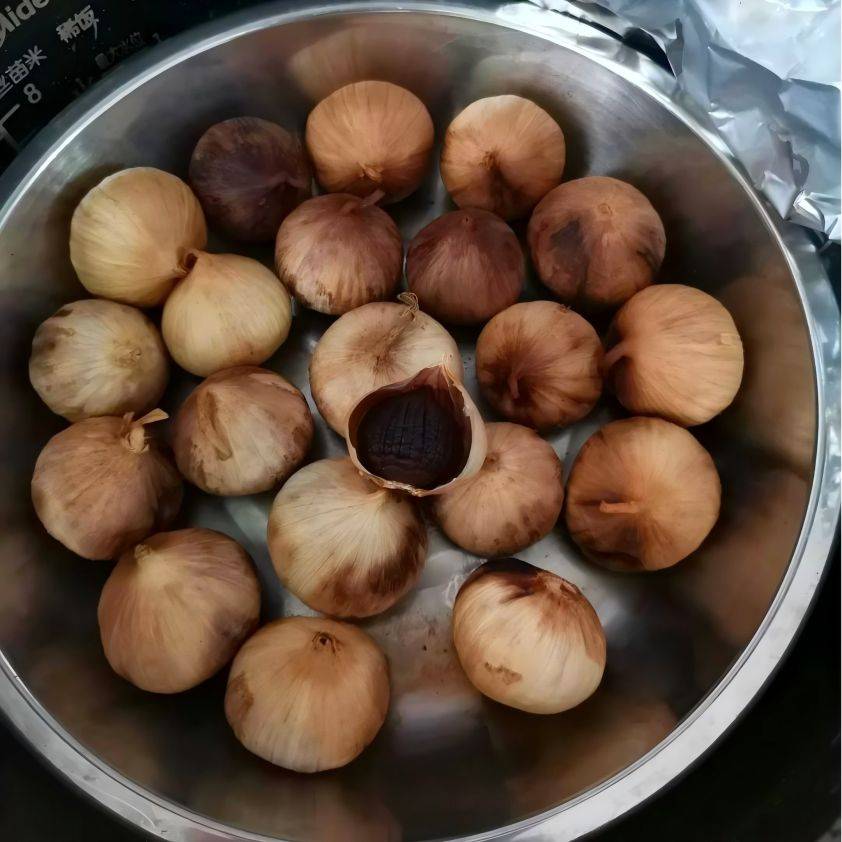
1.2 Anti-cancer effect
Black garlic has a certain anti-cancer effect because it contains S-allylcysteine (SAC) and S-allylmercapto-cysteine, which can block the synthesis pathway of nitrosamines and thus inhibit the growth of cancer cells. In addition, black garlic also contains trace elements that can inhibit the growth of cancer cells, such as germanium, which can inhibit the growth of carcinogens such as nitrosamines[13].
1.3 Liver protection
The liver is an important organ for human metabolism. However, modern people often stay up late, causing the liver to work overtime, which is harmful to the liver. Since black garlic has strong antioxidant properties, it can inhibit the damage caused by lipid peroxidase to the membrane structure of liver cells, ultimately protecting the liver. Studies have found that allicin in black garlic contains a variety of components, such as alliin, S-allylcysteine, S-methylthiocysteine, etc., which can have hepatotoxic activity. Black garlic contains methionine, which helps break down fat, and has a preventive effect on liver diseases such as acute and chronic hepatitis. In addition, the branched-chain amino acids in black garlic, such as asparagine and alanine, also have a significant effect on liver failure and other conditions [14].
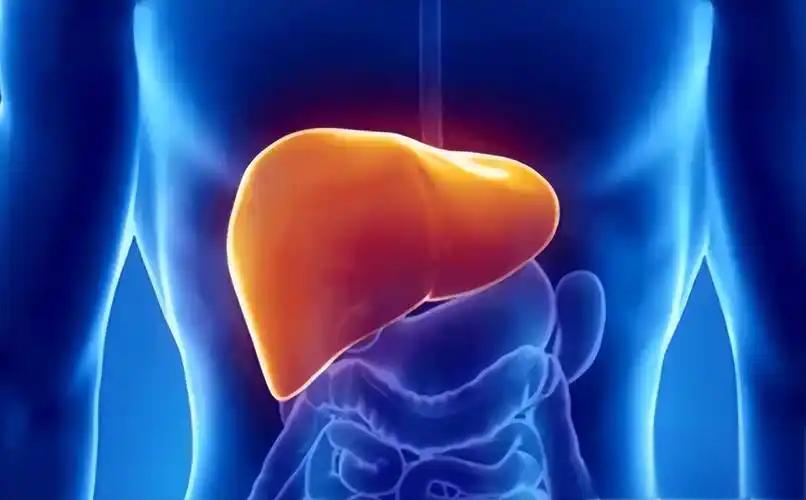
1.4 Regulates blood pressure, blood lipids and blood sugar
Many elderly people suffer from hypertension, hyperglycemia and hyperlipidemia, which can lead to a series of diseases. Black garlic has a certain effect on lowering blood pressure, blood lipids and blood sugar. The combination of active oxygen and harmful cholesterol in the blood can be inhibited by the allicin in black garlic, thereby reducing serum cholesterol and triglycerides [9]. Black garlic is rich in S-allylcysteine and S-methylthiocysteine, which have a certain effect on glycogen synthesis in the liver and protect the islets of Langerhans from damage, thus lowering blood sugar [15].
2 Extraction process of black garlic polyphenols
At present, there are various extraction techniques for the polyphenols in black garlic, mainly including solvent extraction, microwave-assisted extraction, ultrasonic-assisted extraction, etc.[3]. The purification methods mainly include conventional column chromatography, HPLC semi-preparative chromatography and high-speed countercurrent chromatography, etc.[16]. Different extraction methods have different advantages and disadvantages, and the yield and purity of black garlic polyphenol extracts also vary.
2.1 Solvent extraction method
The solvent extraction method is a commonly used extraction technique. The principle of this technique is to take advantage of the fact that polyphenols are easily soluble in water, ethanol, methanol, ether, and ethyl acetate, but insoluble in chloroform, and to extract polyphenols from the mixture. The method is to put black garlic in the solvent. Due to the action of black garlic, such as diffusion and osmosis, the organic solvent can enter the cells. Commonly used extraction agents are methanol and ethanol. Ethyl acetate is commonly used for separating and purifying the extractant, and AB-8 type macroporous resin is commonly used as the adsorbent [17]. The operation is characterized by continuity, speed, and a relatively short production cycle; it causes less damage to heat-sensitive substances; and the solvent has a large concentration multiple and high purity when used in multi-stage extraction. Due to the large amount of organic solvent used and the use of toxic chloroform, there is a risk of chloroform residue, which places high demands on equipment and safety and requires various fire and explosion prevention measures.
2.2 Ultrasonic-assisted extraction method
The most common method is to use ultrasound to assist in the extraction of polyphenols from black garlic. This method increases the molecular movement rate of the substance and enhances its penetrating power. The cavitation, mechanical and thermal effects of other ultrasound waves are used to achieve the extraction of the sample's ingredients. Ultrasonic-assisted extraction technology has the characteristics of high efficiency, fast speed, low temperature, and wide adaptability. After extraction, there are fewer impurities, and the effective ingredients can be easily separated and purified. In addition, the technology is relatively simple to operate, which is conducive to equipment maintenance and maintenance. On the contrary, ultrasonic and light wave generators are relatively expensive, and industrial production costs are also relatively high [17]. In addition, the polyphenol extraction rate of black garlic varies with the volume fraction of ethanol, the liquid-to-material ratio, the extraction time, and the ultrasonic frequency. Among these factors, the volume fraction of ethanol plays a relatively minor role, the liquid-to-material ratio is not significant, and the ultrasonic frequency is the most important factor [4].
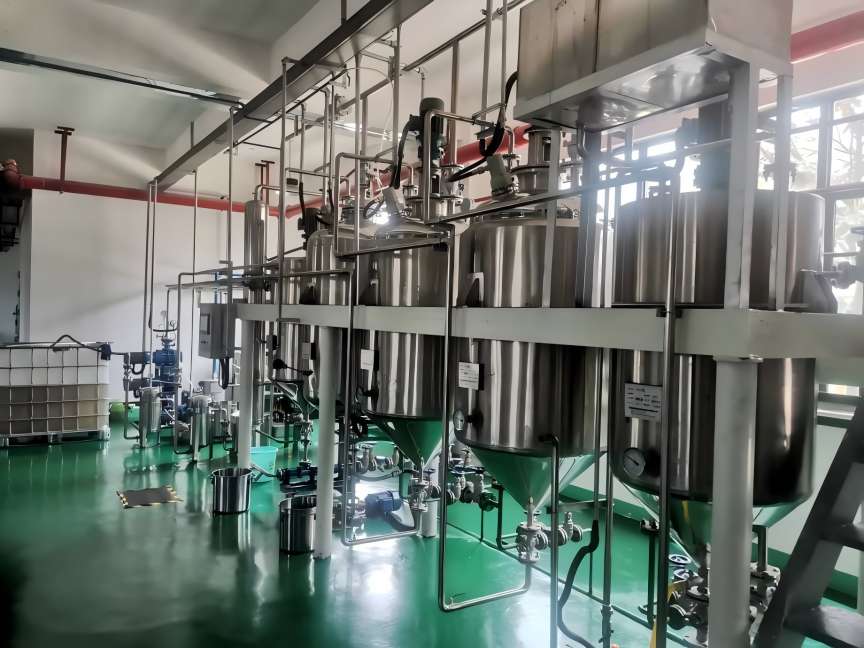
2.3 Supercritical extraction technology
Supercritical extraction technology affects the solubility of supercritical fluids by controlling pressure and temperature and using the relationship between the solubility and density of supercritical fluids. In the supercritical state, components with different polarities and relative molecular mass sizes are selectively extracted in one go by using supercritical fluids to come into contact with the substances to be separated [18]. Supercritical extraction technology is characterized by high extraction efficiency, high yield, low pollution, simple process flow, easy operation, short production cycle, and reduced manpower requirements.
It is an ideal technology for extracting natural medicines and has a wide range of applications. This technology has certain shortcomings in practical applications, the biggest of which is the high requirements for equipment. There are also other less obvious problems in the specific operation process, which increase the operational resistance, increase the cost of the experiment, and increase the requirements for the operator [19-20]. In the field of food, the main solvent used for food processing is carbon dioxide. Due to the inherent properties of carbon dioxide, it reaches a supercritical state at relatively low temperatures and pressures. Carbon dioxide also has the advantages of being safe, environmentally friendly, and inexpensive. Supercritical carbon dioxide is also very safe to handle. The amount of carbon dioxide in the food after processing is very low and can be easily removed, which reduces waste and protects the environment [21].
3 Research progress in the field of food
In modern food development, black garlic has gradually entered the field of view of ordinary people as a functional food, and it can be combined with a variety of products to create a variety of ways to eat. Among these, gummy candies, black garlic sauces, black garlic noodles, black garlic fermented wine, black garlic polyphenol biscuits, etc. are all relatively common applications of black garlic as a functional food. In the production of gummy candies, the addition of black garlic polyphenols can effectively scavenge free radicals, slow down aging, and enhance many nutrients. In the production of wine, the sulfides in garlic have a pungent taste, mainly allicin, which is highly irritating to the digestive tract mucosa, causing diarrhea, vasodilation, and an increase in blood pressure. Black garlic wine is milder than ordinary garlic wine and does not irritate the intestines.
After fermentation, black garlic has more active ingredients. Zhu Bingqiao et al. [22] used a mouse test to show that the level of malondialdehyde in the blood and liver can be reduced by feeding black garlic products, and the activity of antioxidant enzymes can be enhanced. It has been found that ingesting foods containing black garlic powder has a significant inhibitory effect on the synthesis of cholesterol in the body, thereby affecting its metabolism. Therefore, black garlic has a significant preventive effect on cerebrovascular disease [23]. The growth-inhibiting effect of black garlic on cancer cells is related to the germanium it contains, which prevents the production and accumulation of nitrosamines. In addition, the allicin in black garlic promotes the death of tumour cells by increasing their permeability, causing damage to the cell membrane and nucleus and spilling the contents of the cell[24]. By feeding mice with damaged livers and kidneys, it was found that black garlic has the effect of losing weight, lowering blood lipids, and protecting the liver and kidneys [25]. In addition, the amino acids, vitamin C, and trace element zinc in black garlic can all improve the body's immune function [15]. Compared with garlic, black garlic has a much better effect in making wine.
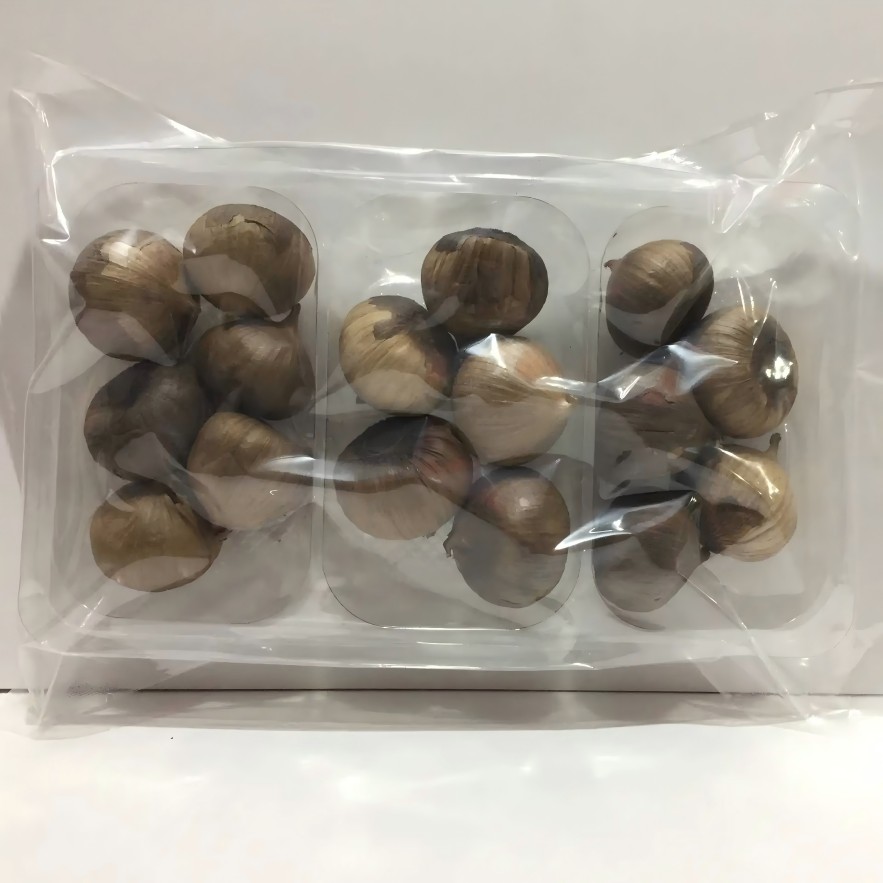
Compared with fresh garlic, black garlic has higher nutritional value and greatly enhanced functional effects. However, black garlic is not yet well known to the public, and there is a lack of a market for it. In addition, black garlic has a long production cycle, low yield, high price, and difficulty in controlling product quality, which has led to poor sales. Most of the black garlic on the market is ready to eat, and most black garlic-related processed products are primary products. Deeply processed products are relatively simple and cannot meet people's needs. Therefore, the development of black garlic-related deep processing products has become a top priority. Black garlic food has good development prospects. Judging from the current market situation, black garlic is less common than other garlic varieties such as la ba garlic, sugar garlic, and garlic paste, which is one of the reasons why it has not become popular. Secondly, the product types of black garlic are mostly in small packages, and bagged or canned products occupy a larger market share. As a new resource food, black garlic still has a long way to go before its rich nutritional value and health benefits are unanimously recognized by the people of the country. On the basis of a good understanding of the market situation, combining policies with scientific marketing strategies is an important way for black garlic products to quickly capture the market, and it is worth promoting and practicing.
Through biological fermentation technology, researchers have produced garlic into a health food that is convenient to carry with you and has significant value for human health. Zhou Guangyong et al. [26] conducted a large number of studies on the changes in various components of fresh garlic and black garlic. The results showed that the main components in black garlic, such as sugars, total acids and free radical scavenging capacity, were enhanced, while the moisture content of garlic was reduced and the volatile substances (such as organic sulfides) were relatively reduced. In addition, the study also found that the ethanol extract contained in black garlic has a certain anti-aging effect. Other studies have also shown that black garlic is rich in a variety of amino acids, organic sulfides, vitamins and other substances [27]. Zhang Xin et al. [28] compared the effects of extracts from black garlic and fresh garlic on cellular immune function and found that, relative to fresh garlic extract, black garlic extract had a more pronounced effect on inducing Th1/Th17-type cellular immune responses and stronger killing activity of NK cells. Black garlic extract has been shown to play a key role in antibacterial and antitumor effects, and to promote the body's ability to produce a strong Th1-type immune response.
According to incomplete statistics, there are currently relatively few related food products made from black garlic. Among these, black garlic polyphenol biscuits are one type of product that have already appeared on the market. These biscuits are marketed on the basis of their ability to ensure the original nutritional composition of black garlic, and to provide antioxidant, anti-aging, and free radical scavenging properties. At present, there have been some studies on black garlic compound drinks. For example, Guo Jinting et al. [29] studied a drink called black ginseng and black garlic, with additives such as citric acid, oligofructose, and white sugar. The finished product has a prominent aroma of black ginseng and black garlic, a moderately sweet and sour taste, and good product stability. Dong Yan et al. [30] brewed a black garlic vinegar. Yuan Lei et al. [31] developed a black garlic flavored beer, and the optimal process conditions were fermentation with M4 yeast, and adding 5% black garlic during the main fermentation period, at which time the beer had the best flavor.
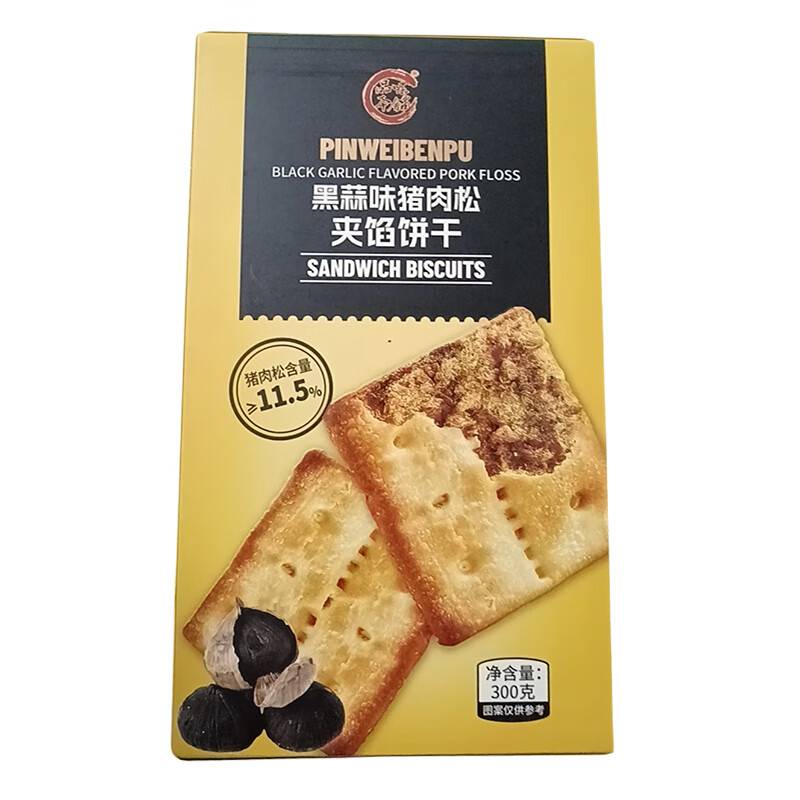
4 Conclusion
In recent years, research on the extraction technology of plant polyphenols has increased year by year. The polyphenols currently found in China are mainly plant polyphenols, which are widely available in a wide variety of sources. Their scope of application is mainly focused on medicine, food additives, daily cosmetics, agriculture, etc. Black garlic polyphenols are natural compounds with biological activity, and it is of great significance to optimize the process of extracting polyphenols from black garlic. Black garlic polyphenols have important physiological functions, such as anti-oxidation, scavenging free radicals, relieving constipation, etc., which have a positive effect on human health and have attracted widespread attention. Modern technology adds polyphenol extracts to foods to make a variety of healthy foods that are popular with the public. It can be seen that functional foods made with black garlic polyphenols as an auxiliary ingredient have even broader development prospects. Currently, the extraction of black garlic polyphenols is looking for high-tech methods to improve the extraction rate of black garlic polyphenols, conduct in-depth research on its biological activity, expand the market for black garlic deep-processing products, and in the future, black garlic polyphenols will also play a role in more fields.
References:
[1] Yu Zhongming, Wang Lixin, Wang Nanni, et al. Research on the optimization of the process of extracting polyphenols from black garlic by composite enzyme extraction using response surface methodology [J]. Chinese Materia Medica, 2018, 41(12): 2883-2885.
[2] Lei Fengchao, Hao Guo, Zhu Li, et al. Research progress on the nutritional value and health benefits of black garlic [J]. Food Industry Science and Technology, 2012, 33(13): 429-432.
[3] Wang Zhao, Li Changbin, Li Fengjiao, et al. Study on the extraction of black garlic polyphenols and antioxidant properties by acid method [J]. Chinese Food Additives, 2021, 32(10): 15-22.
[4] Huang Jiajia, Yang Zhao, Li Yanjie, et al. Ultrasonic-assisted extraction of black garlic polyphenols and in vitro antioxidant properties [J]. Food Science and Technology, 2018, 43(4): 212-217.
[5] Wu Ting, Liu Sishi, Chen Zhongwei, et al. Optimization of microwave-ultrasonic synergistic extraction process and its antioxidant research of black garlic polyphenols [J]. Specialty Research, 2022, 44(4): 81-89.
[6] Anton, Li Xinsheng, Ma Chao, et al. Research progress on the composition and function of black garlic [J]. Chinese Fruit and Vegetable , 2014 (10): 51-54.
[7] Ye Miao, Liu Chunfeng, Li Ziyu, et al. Research progress on the nutritional function and processing technology of black garlic [J]. Food and Fermentation Industry, 2022, 48 (1): 292-300.
[8] M S Blanco Canalis, M V Baroni, A E León, et al. Effect of peach puree incorportion on cookie quality and on simulated digestion of polyphenols and antioxidant properties [J]. Food Chemistry, 2020(33): 127 464.
[9] Liu Yufeng, Sun Yufeng, Ji Yanru, et al. Research on the medicinal and food functions of black garlic [J]. China Condiments, 2015, 40(9): 125-129.
[10] Andrzej L., Dawidowicz, Dorota W, et al. On practical problems in estimation of antioxidant activity of compounds by DPPH method (Problems in estimation of antioxidant activity) [J]. Food Chemistry, 2012 (3): 1037-1043.
[11] Jae M L, Hyun C, Pahn-Shick C, et al. Development of a method predicting the oxidative stability of edible oils using 2,2-diphenyl-1-picrylhydrazyl (DPPH) [J]. Food Chemistry, 2007(2): 662-669.
[12] Cao Weiwei, Li Linlin, Chen Junliang, et al. Development and quality evaluation of black garlic polyphenol biscuits [J]. Cereals, Oils and Fats, 2023, 36(4): 108-111.
[13] Zhang Lili. Research on the production process and antioxidant activity of black garlic sauce [D]. Tianjin: Tianjin University of Science and Technology, 2016.
[14] Li Xin. Research and development of a compound black garlic laxative functional beverage [D]. Tianjin: Tianjin University of Science and Technology, 2019.
[15] Xiong Xinjian, Lu Jianxin, Li Dan, et al. Black garlic processing technology and its application [J] . Agricultural Products Processing, 2014 (11): 74-77.
[16] Chen Liang, Li Yiming, Chen Kaixian, et al. Research progress in the extraction and separation of plant polyphenols [J]. Traditional Chinese Medicine, 2013, 44 (11): 1501-1507.
[17] Lu Xin, Zhang Lin, Lu Ruixue, et al. A review of the extraction and detection methods of flavonoids in persimmon leaves [J]. Journal of Jiyuan Vocational and Technical College, 2016, 15(2): 7-11.
[18] Shi Liyan, Shi Jingming, Zhang Xianhai, et al. Supercritical fluid extraction technology [J]. Medicine and Health , 2010 (9): 16-19.
[19] Zhao Ru. Analysis of the application of supercritical fluid extraction technology in the extraction of natural medicines [J]. Chemical Industry Management, 2019 (36): 17-18.
[20] Liu Changqing, Sheng Zhouhuang, Song Lifei, et al. Supercritical extraction and refining of maple seed oil [J]. Food Industry, 2022, 43(9): 13-16.
[21] Mara EM Bragal, Marisa C Gaspar, Hermínio Cde Sousa. Supercritical fluid technology for agrifood materials processing [J]. Current Opinion in Food Science, 2023, 50(4): 100 983.
[22] Zhu B Q, Wu H G, Liu Y Y, et al. Research on the antioxidant activity of black garlic [J]. Food Research and Development, 2008(10): 58-60.
[23] Ao X, Yoo J S, Zhou T X, et al. Effects of fermented garlic powder supplementation on growth performance, blood profiles and breast meat quality in broilers [J]. Live-stock Science, 2011(1): 85-89.
[24] Duan Lili, Ding Jie, Ji Derong, et al. Research progress on the nutritional value and processing methods of black garlic [J]. New Agriculture, 2016(9): 25-26.
[25] Jung Y M, Lee S H, Lee D S, et al. Fermented garlic pro- tects diabetic, obese mice when fed a high-fatdiet by anti- oxidant effects [J]. Nutrition Research, 2011, 31(5): 387-396.
[26] Zhou Guangyong, Miao Yanshu, Chen Jieyu, et al. Changes in the main components and free radical scavenging capacity of black garlic during storage [J]. Chinese Journal of Food Science, 2010, 10(6): 64-71.
[27] Saravanan G, Prakash J. Effect of garlic (Allium sativum L.) on lipidperoxidation in experimental myocardial infarction in rats [J]. Journal of Ethnopharmacology, 2004(1): 155-158.
[28] Zhang Xin, Chen Liudan, Hou Ying, et al. Comparison of the effects of black garlic and fresh garlic extracts on cellular immune function in mice [J]. China Medical Herald, 2012 (14): 31-34.
[29] Guo Jinting, Guo Xiang, Zhao Mengdie, et al. Development of an anti-fatigue beverage containing black ginseng and black garlic [J]. Journal of Jilin Medical University, 2018, 39(2): 91-94.
[30] Dong Y, Yang QL, Zhang ZH, et al. Development of a health drink containing black garlic vinegar [J]. China Brewing, 2013, 32(4): 161-163.
[31] Yuan Lei, Feng Lei. Study on the brewing process of a black garlic flavored beer [J]. Modern Salt Chemical Industry, 2019, 46(4): 62-64.


 English
English French
French Spanish
Spanish Russian
Russian Korean
Korean Japanese
Japanese